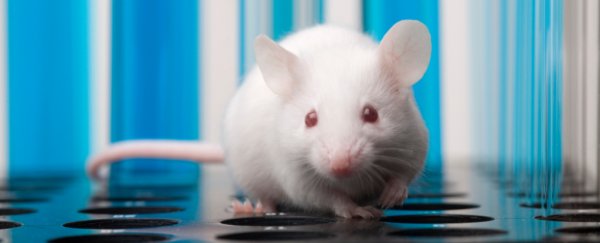Being able to tell the difference between a photo of something and the actual thing itself – picture-to-object equivalence, in science speak – is a useful test for better understanding the visual and cognitive function of other primates, birds, and even rats.
But how far does this ability to interpret a flat image extend in the animal kingdom?
A new study has found mice might also have the capacity, as they demonstrated the ability to link a 2D image of an object with the actual 3D object itself, using the hippocampus part of their brains in the same way that humans do.
This implies mice could teach us much more about how our own brains work than we previously thought. This also gives us a better understanding of how picture-to-object equivalence works in any brain, from rodents to monkeys to human beings.
"Our study challenges the view that perceptual limitations of mice render them inappropriate for modeling human memory and visual processing and that familiarity-based recognition is independent of the hippocampus," says neuroscientist Robert Stackman from Florida Atlantic University.
"Our findings also provide strong support that a functional mouse hippocampus is required for this form of nonspatial visual recognition memory and picture-object equivalence."
The researchers tested the mice by showing them pictures (2D versions) of an object – e.g., a chess piece or a small stack of Lego bricks – in one session, then replacing these pictures with two 3D objects: one that they had previously seen in a photograph, and one that was completely new to them.
Almost all of the time, the mice wanted to explore the brand new 3D object, suggesting they recognized the other 3D object was something they'd encountered before – albeit as a flat picture rather than something three-dimensional.
The same picture-object equivalence powers were shown to be present irrespective of object symmetry, likeness, viewing angle, composition, and image realism, and even when differences in low-level visual features (such as color and luminance) were controlled for.
Inhibiting a key part of the hippocampus in mouse brains removed this ability to distinguish between 2D and 3D versions of objects, showing the researchers that the cognitive ability works in a similar way to how it does in our own brains.
"In primates, the hippocampus is thought to play an essential role in declarative or explicit memory, enabling an individual to replay a 'story' of a previously encoded experience," says neuroscientist Sarah J. Cohen from Florida Atlantic University.
"We suggest that that 'story' enables one to recognize items learned in picture form when they are subsequently presented in 3D form. The mouse hippocampus likely encodes and consolidates the picture exploration as a 'story' of that experience or event, within a specific context as a form of explicit memory."
It's already known that mice are capable of recognizing something they've seen before, but this ability to tell the difference between photos and actual objects puts them on a different level of cognitive processing.
While it's hard to tell exactly what mice are thinking – until they learn to speak and tell us themselves – the researchers suggest these animals are indeed able to separate the representations of objects from the real deal.
With the hippocampus so important in terms of forming and managing memories, it would seem that mice can be much more helpful to scientists in their studies of visual recognition and processing than previously thought.
"Taken together, our results provide convincing evidence that the mouse may serve as an effective model organism to investigate higher-order sophisticated aspects of mammalian visual perception and recognition," says Stackman.
The research has been published in Scientific Reports.
